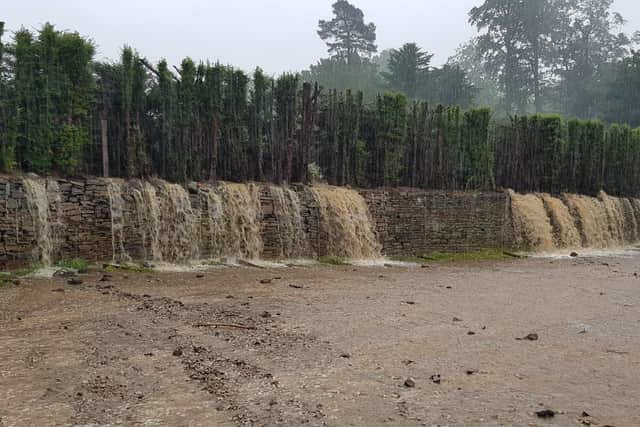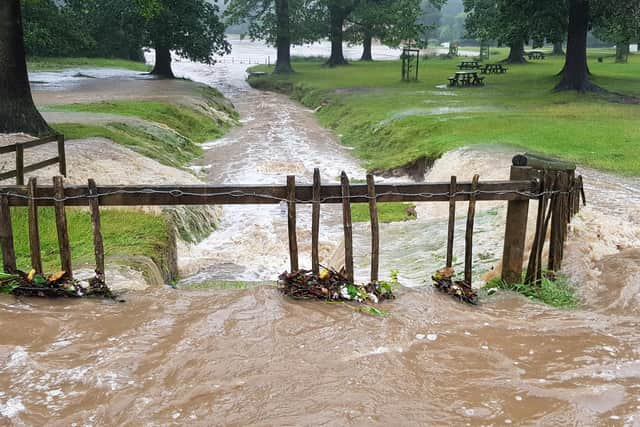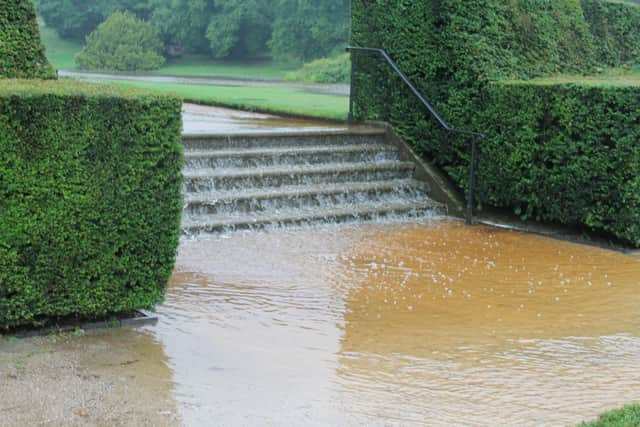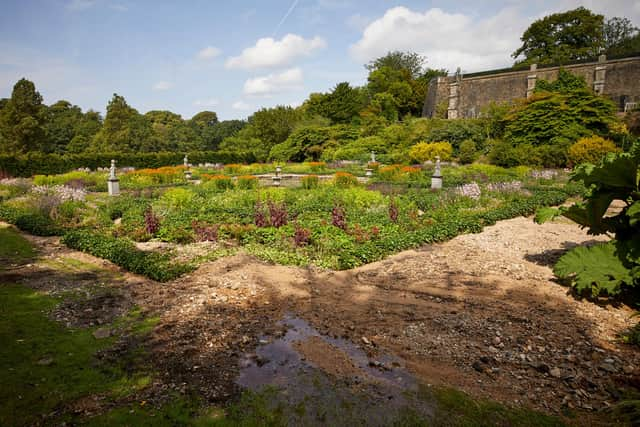National Trust working to protect Lyme Park from climate crisis two years on from devastating floods
and live on Freeview channel 276
Torrential rains on July 31, 2019, saw water rush down off surrounding moorland, leaving much of Lyme submerged and damaging the Grade II* listed garden, café and wider estate at a cost of more than £250,000.
The iconic lake in front of Lyme House burst its banks and an estimated 40 tonnes of debris was deposited into the gardens, although fast-acting National Trust staff were able to protect the Grade I listed mansion and its collection from any damage.
Advertisement
Hide AdAdvertisement
Hide AdThe gardens have since been restored, but as the effects of the climate emergency become more apparent it is likely that similar flooding events will become more common.


Lyme’s general manager Deborah Maxwell said: “Our team of rangers, gardeners and volunteers have done a fantastic job of repairing the damage that was caused.
“The summer beds in our garden are looking particularly beautiful this year thanks to all of their hard work. But it’s clear that we need to do more to protect this unique place from flooding in the long term.”
She added: “We know how painful it can be, both for our visitors and the community around us, when flooding hits. But by working in partnership we are putting real plans in place to protect Lyme and our neighbours, keeping this special place open for everyone to enjoy.”
Advertisement
Hide AdWith support from Defra’s Green Recovery Challenge Fund, players of People’s Postcode Lottery, and partners including Manchester City of Trees and Moors for the Future, work has now begun to update the estate’s water management infrastructure and flood defences, which should also help protect nearby homes and businesses.


Advertisement
Hide AdThe work is also supported by donations from trust’s members and visitors.
One of the first steps will be to make improvements to lakes and reservoirs, including the lake in front of the house which was made famous in the BBC’s 1995 Pride and Prejudice adaptation, starring Colin Firth as Mr Darcy.
Deborah said: “If Mr Darcy were to jump into one of the lakes and reservoirs at Lyme today he would be in for quite a shock. Over the years, flooding has caused silt to build up in some of our lakes so they are much shallower than they used to be.
Advertisement
Hide Ad“One aim of our project is to remove this silt and make other improvements to the structure of the lakes at Lyme, so that they can hold more water during periods of heavy rain.”


Beyond the formal gardens, the National Trust cares for 1,400 acres of moorland in the upper catchment of the river Mersey.
Advertisement
Hide AdWhen in a healthy state, this moorland habitat has the potential to store and slow significant amounts of water, helping increase the resilience of the landscape and mitigate the risk of floods downstream.
Chris Dunkerley, lead ranger at Lyme, said: “Over the coming years our team will be working with Moors for the Future to restore 174 hectares of moorland to make it a more effective tool for preventing floods.
Advertisement
Hide Ad“Alongside Manchester City of Trees we’ll also be planting around 6,000 trees, including willow, rowan and Scots pine, which will soak up water through their roots while catching rainwater on their leaves and branches, slowing it down before it can reach the ground.”


Other natural flood management techniques will include building ‘leaky dams’, where felled wood is laid across streams to slow the flow of water during periods of heavy rain.
The work is part of the Trust’s wider programme of work, Riverlands, which aims to ensure that rivers and catchments linked to its properties are clean, healthy and rich in wildlife.
Advertisement
Hide AdWork to protect Lyme comes after the National Trust published its climate change hazard map to highlight the threat that climate change poses to some of the UK’s most iconic cultural sites.
Advertisement
Hide AdCreated ahead of the COP26 global climate summit in November, the hazard map looks at the climate change “worst case scenario” and plots National Trust places alongside existing climate data to map out how, at a local level, potential climate hazards could have a real impact on much-loved cultural sites.
Chris said: “We know that if climate change continues at its current rate, places like Lyme are at serious risk of damage from flood events.
“While we are tackling climate change in lots of ways here at the National Trust, including our plan to become carbon net zero by 2030, we also need to prepare for floods now.”


Just this month, the Met Office and climate experts produced two new reports laying out how extreme weather has already increased and will become more and more common in the UK over the coming decades.
Advertisement
Hide AdAdvertisement
Hide AdOne found that 2020 was third warmest, fifth wettest and eight sunniest on record for the UK, based on data stretching back more than a century. No other year has fallen in the top ten for all three variables for the UK.
The other report offered more evidence that the higher the level of global warming, the projected increase in frequency or severity or both will be stronger for hot weather, droughts and flooding in the UK.
Lead author Helen Hanlon, said: “Our research clearly shows that the more we warm the planet through human-induced climate change, the more severe weather we can expect in the UK. Severe weather can impact us in a number of ways, from our health, to flooding, food availability and transport issues.
“Importantly, the paper shows that the increase in high-impact weather is reduced if global warming is kept as low as possible, showing that efforts to reduce human-induced climate change will curb the most severe impacts of future weather in the UK.”